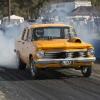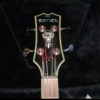Honda or BMW rods I think.
As a sidenote regarding strokers, no one going fast and winning races is using one.
Reliability is the problem......but an offset ground crank isn't as much a problem as a fully stroked motor.
If you can still find a Kit Cullen crank, they are built for the 202 mains. I had him turn mine down for the 186.
I had 3.7L with Toyota pistons and stock rods..........machinist stuffed up and put Fraud piston clearance in and killed it.
With a GOOD main girdle, a properly ground head and block, and all the clearancing, there is no reason you can't make good regular torque if you don't aim for 7000+ rpm every time you go out. Really, if I had the money to do it again, I'd girdle OVER the head, to keep it torqued down. It was 25mm out of true at the end of it........
Grant..






 View Garage
View Garage











